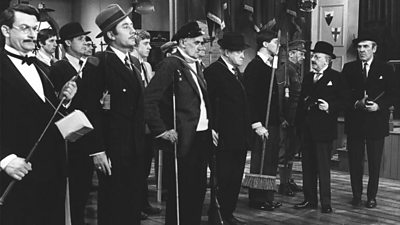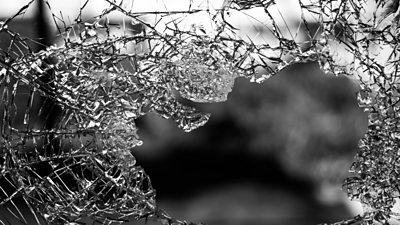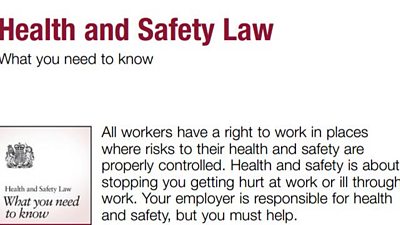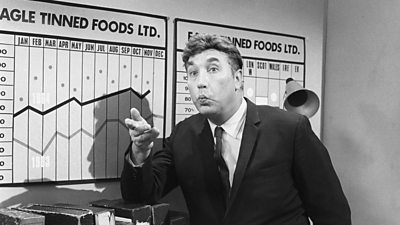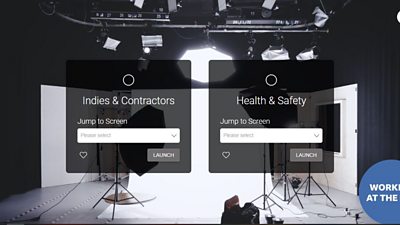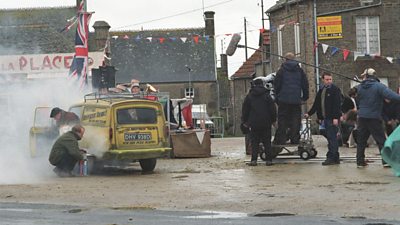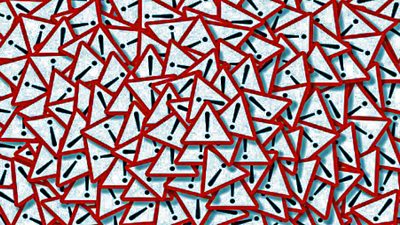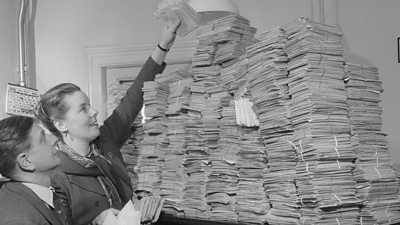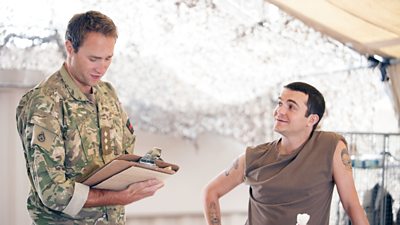Their purpose is to give us confidence that we are meeting the requirements of our Safety Policy and safe working practices, and where we aren’t, guide us on how to do better in future. To be effective, any monitoring needs to be against established safety performance measures or standards.
What Can Go Wrong?
- Accidents / incidents resulting from failure to impose appropriate safety standards
- Lack of monitoring by managers can be perceived by workers as a lack of interest in their safety and wellbeing
- Gross or repeated failure to meet safety standards can lead to legal censure.
Legal / ���˿��� Requirements
- There are general legal requirements on employers to monitor and review preventive and protective measures to make sure they are effective
- There are also specific legal requirements to monitor certain aspects of safety, for example, to check strength and stability of lifting equipment, the suitability and condition of personal protective equipment, provide safety policies and procedures, etc. Many of these are described in our Safety Guidelines.
Monitoring Responsibilities
Wherever they work, ���˿��� Managers have a responsibility to ensure:
- team members work is monitored to ensure compliance with workplace risk assessment and inspection / audit findings, with management support provided as needed
- employees are consulted on monitoring visits and findings; this includes engaging with your Union Safety Representatives
- workplace safety inspections are carried out and recorded on Safety Hub at appropriate intervals to ensure appropriate standards of housekeeping and maintenance of work equipment
- team members are encouraged to report any accidents or ill-health and, where these occur, ensure these are properly investigated, reported and addressed to help prevent recurrence.
- team
All ���˿��� staff / workers have a responsibility to ensure we:
- report to our manager any new or unfamiliar hazards in the workplace as soon as we notice them – if there is an imminent risk of injury, stop work until the situation is resolved
- report to our line manager any significant accidents / incidents we have at work and, as advised by them, record it on the ���˿��� incident reporting process.
How to Monitor
To be effective, all safety monitoring should be:
- carried out by competent people – staff may need to be trained in the process and in the safety standards which apply
- given appropriate resources – in terms of time and personnel, and freedom from other conflicting work activities
- timely – the frequency required is likely to be described in legislation or ���˿��� Safety Guidelines, but if not, attribute a frequency based on an assessment of safety risk. The result should be snapshot of safety performance now, and not of sometime in the past
- proportionate and targeted – concentrate efforts on areas of greatest concern / highest risk, but also make sure other areas aren’t always overlooked
- reported – where required, make a record which is reported up the management chain and which includes any significant safety findings
- reviewed – by managers to ensure significant findings are acted upon to improve safety performance.
Types of Monitoring
Monitoring happens at various levels throughout the organisation and can be categorised as either:
Active – monitoring that occurs during the planning and carrying out of work activities and tends to be preventive in nature, for example:
- Location safety assurance visits by Senior Managers / Safety
- Inspections of pool vehicles and hire cars
- Hearing tests for musicians and other health surveillance
- Risk assessment spot checks on location by managers and others
- Competency checks by production management teams
- Statutory inspections of lifting and work at height equipment
- Pre-user checks of plant and equipment such as ladders, harnesses, earth continuity of electrical distribution systems, etc.
Reactive – monitoring and review that is prompted by a specific event or identified safety failing, for example:
- Investigating accidents, near miss incidents or equipment failures
- monitoring cases of ill health and sickness absence
- reviewing cases of reported poor safety practice.
Safety Assurance Visits
- To help understand and recognise how health and safety standards are applied by the business senior managers carryout safety visits. Each Division administers their own visit schedule and sets individual targets for Board members and divisional management.
- By conducting these visits and asking questions it demonstrates a curiosity and leadership towards health and safety. As a general rule a visit should be made to a production with significant safety challenges and completed in conjunction with a member of the ���˿��� Safety team (see Forms and Checklists in Related Topics to download the Safety Assurance Form).
Aim of the monitoring visits:
- To raise the profile of safety on productions and across the business (e.g. projects, international offices)
- For senior managers to gain a better understanding of the current health and safety risks and how these are managed
- To determine whether teams are meeting required health and safety standards
- To share good practices observed across the Division and provide feedback on areas for improvement
Each visit involves:
- Discussions with the production/business team
- Observing the rehearsals/filming, viewing the set, or work area
- Review of safety documents (risk assessment, training records, design plans, schedules) for the activity (i.e. filming) observed
- Sharing any good practices and suggesting ways to improve practices. Any shortfalls or concerns should be addressed by the end of the visit and clear actions assigned to ensure safe working
It also includes a question checklist completed at the time and then submitted onto the myRisks safety system, asking :
- Who is responsible for safety on location and is this commonly known?
- How are safety controls communicated and is this effective?
- Has all mandatory training been completed?
- How are contractors managed and are they competent?
- Are the controls listed in the risk assessment actually in place?
- Are emergency plans clearly communicated and known to all?
- What are the risks to the public and are these effectively controlled?
- How are working hours being managed and how realistic is the schedule?
These visit can involve a manager visiting a location or studio or where a visit is not possible e.g. a shoot in a remote location, a desktop review can be undertaken. The ���˿��� Safety Advisors will also undertake assurance monitoring to give you confidence that you're managing your safety risks and to help you identify opportunities for improvement.
Head over to the to start your Assurance.
Recommended links
-
[���˿��� network only]
-
-
General safety topics
More from SSR
-
Your platform to record accidents, risk assessments, assurance monitoring and inspections
-
Safety Equipment Stores
Just one number to call: 020 3614 5155 -
���˿��� Safety Guidelines
An A-Z of ���˿���'s Health and Safety Guidelines -
Safety Advice Line: 0370 411 0464 Email: safety@bbc.co.uk
- A-Z of ���˿��� Safety Guidelines
- Accident Reporting and Investigation
- ���˿��� Health & Safety Policy
- Contractors (incl. vetted lists)
- Contributors
- Fire Safety
- Freelancers
- Independent Production Companies
- Risk Assessment
- Safety Alerts
- Safety Responsibilities
- Safety Training
- Sets & Premises Safety Guide
Events guidance - key links:
- Exhibitions
- General Guidance
- Indoor Location Recce Checklist
- Outdoor Location Recce Checklist
- Major Incidents & Emergency Planning
- Marketing and Promotional
- Noise Exposure
- Planning and Management
- Responsibilities
- Responsibilities Form
- Laser Lighting Effects
- Strobe Lighting
- Temporary Stages and Rostra
Health topics - key links:
- (���˿��� network only)
- Contributors Fitness to Participate
- Display Screen Equipment (DSE)
- (���˿��� network only)
- First Aid and Welfare on Location
- International Travel - Risks & Health
- Manual Handling
- Mental Health: ���˿���page
- (���˿��� network only)
- Personal Health and Wellbeing
- Pregnancy
- Psychological Trauma Support & Trauma Risk Management (TRiM)
- Tiredness and Fatigue
- Travel Health Contacts
���˿��� High Risk - key links:
- CBRN and Industrial Spills
- Covert Filming
- Crisis Management and Security Support
- Demonstrations, Protests and Crowds
- Disaster Coverage
- Door Stepping
- (���˿��� network only)
- (���˿��� network only)
- Public Order
- Safety Equipment Stores
���˿��� Journalism - key links:
���˿��� Productions - key links:
- Aerial Filming and Airfields
- Animals: Displaying and handling for performance
- Boats: Working on
- Children and Young People
- Driving
- Electrical Equipment and Systems
- First Aid and Welfare on Location
- Food Safety (Cooking and Catering)
- Remote Location Working
- Roads and Streets: Working by
- Security of Productions on Location
- Stunts
- Tiredness and Fatigue
- Unmanned Aerial Systems (UAS aka Drones)
- Vehicles: Recording in, from and around
- Working at Height: Mobile Elevating Work Platforms
- Working at Height: Tower Scaffolds
���˿��� Radio - key links:
- (���˿��� Network only)
���˿��� Security - key links:
���˿��� Sport - key links:
About this site
This site describes what the ���˿��� does in relation to managing its health, safety and security risks and is intended for those who work directly for the ���˿���.
It is not intended to provide instruction or guidance on how third parties should manage their risks. The ���˿��� cannot be held liable for how this information is interpreted or used by third parties, nor provide any assurance that adopting it would provide any measure of legal compliance. More information
Some links on this site are only accessible when connected to the ���˿��� network
